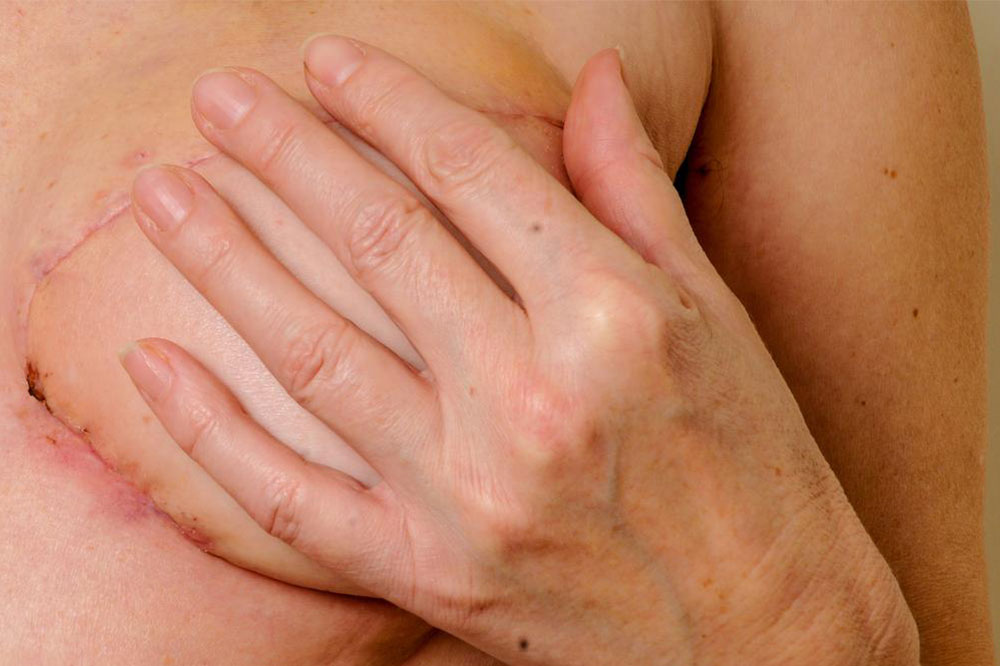
Signs and Symptoms of Breast Cancer
Breast cancer is one of the most common women’s cancers. Even though it can be a terrifying diagnosis, breast cancer when found in the early stages is very treatable. In fact, many women discover breast cancer due to a self exam or a doctor exam during a check up in it’s earliest stages. Common early warning symptoms for breast cancer include the following:
1. Changes in breast size or shape
Changes may be textural to the skin of the breast, or abnormal growths (or lump) in the breast or under the arm, or noticeable changes in breast shape.
2. Breast swelling
This may include redness or darkening of the breast tissues.
3. Discharge
Nipple discharge that appear suddenly is concerning, as is colored discharge or crust surrounding the nipple.
4. Rash
A rash that develops over the breast or on or around the nipple is often a sign of breast cancer. As are visible veins on the surface of the breast.
5. Breast pain
Pain in the breast, underarm, or nipple that does not disappear should be brought to the attention of your doctor immediately.
6. Treatment for breast cance r
Treatment for breast cancer often involves surgery. Your doctor will determine the type of surgery that is most appropriate for the patient based on a number of factors like the stage of the cancer, how aggressive the cancer is, and what is acceptable to the patient in terms of their long-term peace of mind. Herein, we discuss the various common surgical treatment options for breast cancer:
- Cryotherapy: Also called cryosurgery, employs extreme cold for freezing and killing cancerous cells. As of this moment, cryotherapy is somewhat of an experimental treatment for breast cancer.
- Prophylactic ovary removal: This is actually a preventive surgery that lowers the estrogen levels in the body. This makes it harder for the estrogen to stimulate any breast cancer development.
- Prophylactic mastectomy: This surgery is the preventive removal of the breast for lowering the risks of breast cancer in people who face a high risk of it occurring.
- Mastectomy: A mastectomy is a surgical process in which the doctor removes all of the breast tissue. This surgery is less intrusive and more refined than it used to be earlier because the muscles underneath the breast are, in most cases, no longer removed.
- Lumpectomy: Among all of the common surgical treatments for breast cancer, this is the most invasive. Also known as the breast-conserving surgery, lumpectomy removes only the tumor and a small amount of the tissue surrounding it.
- Breast reconstruction: This surgery rebuilds the breast after a lumpectomy or mastectomy. The reconstruction could take place at the same time as that of the surgery employed for removal, or even months or years later. In fact, some people even decide to opt for a prosthesis or not to have reconstruction at all instead.
- Axillary lymph node dissection/lymph node removal: This surgery could take place during a mastectomy or a lumpectomy in case of the biopsy showing that the breast cancer cells have spread outside the milk duct. In fact, some people even qualify for the sentinel lymph node dissection surgery, which happens to be less invasive.
7. Why are breast cancer surgeries are performed?
Breast cancer surgeries are so common because they are employed as treatment options in most stages of breast cancer, such as
- Recurrent breast cancer, which comes back after initial treatment. It could be removed with additional surgery.
- Locally advanced breast cancers, which are large in size or have spread to the surrounding lymph nodes. Lumpectomies or mastectomies are required to remove these, followed by radiation therapy.
- In cases of larger breast cancers, targeted therapy, hormone therapy, and chemotherapy are first done first to shrink the tumor for making it possible to perform lumpectomies.
- Early-stage breast cancer could be treated with mastectomies or lumpectomies with or without breast reconstructions.
- Noninvasive breast cancer also requires a lumpectomy or mastectomy to treat it, with or without breast reconstruction and probably followed by radiation therapy.
- High-risk breast cancer necessarily requires surgery with or without immediate breast reconstruction for further prevention.


